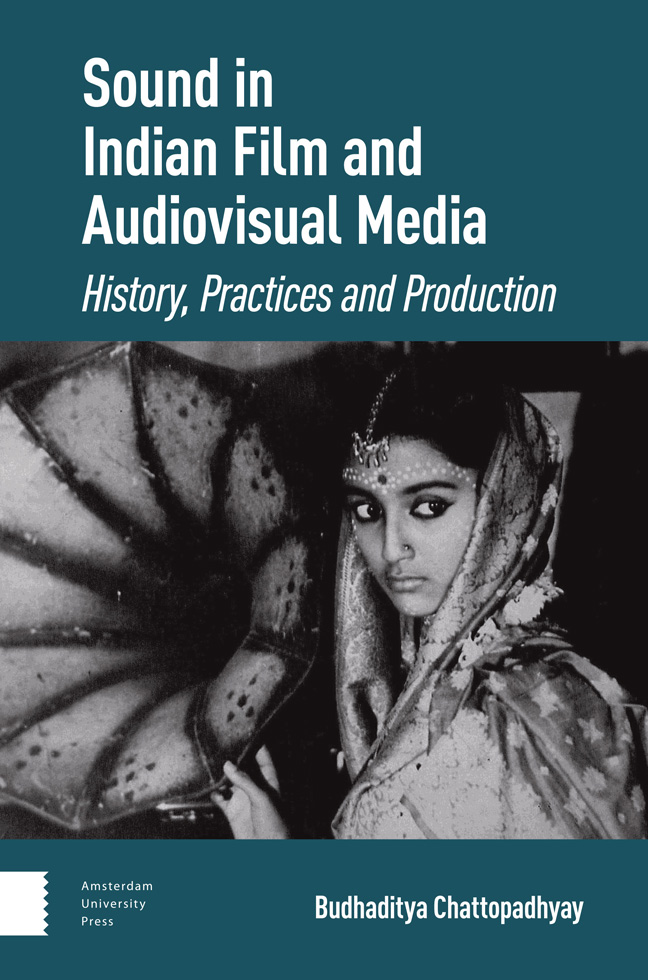Book contents
- Frontmatter
- Contents
- Acknowledgements
- 1 Introduction
- 2 The Technological Frameworks
- 3 Direct Sound and Early Talkies
- 4 Sound of the Golden Age
- 5 Tracing the Sound in Satyajit Ray’s Film-works
- 6 Popular Films from the Dubbing Era
- 7 Parallel Sounds, Radical Listening – Part I
- 8 Sholay, Stereo Sound and the Auditory Spectacle
- 9 The Advent of Digital Sync Sound
- 10 The Surround Revolution
- 11 Sound in the Audiovisual Media Arts
- 12 Parallel Sounds, Radical Listening – Part II
- 13 A Concluding Voiceover
- Bibliography
- Filmography
- Index
5 - Tracing the Sound in Satyajit Ray’s Film-works
Published online by Cambridge University Press: 20 February 2024
- Frontmatter
- Contents
- Acknowledgements
- 1 Introduction
- 2 The Technological Frameworks
- 3 Direct Sound and Early Talkies
- 4 Sound of the Golden Age
- 5 Tracing the Sound in Satyajit Ray’s Film-works
- 6 Popular Films from the Dubbing Era
- 7 Parallel Sounds, Radical Listening – Part I
- 8 Sholay, Stereo Sound and the Auditory Spectacle
- 9 The Advent of Digital Sync Sound
- 10 The Surround Revolution
- 11 Sound in the Audiovisual Media Arts
- 12 Parallel Sounds, Radical Listening – Part II
- 13 A Concluding Voiceover
- Bibliography
- Filmography
- Index
Summary
Abstract: This chapter develops a careful study of the works of filmmaker Satyajit Ray. His work with sound is analysed, conceptualizing the term ‘audiographic realism’ that emphasizes the actual site-specific sound elements recorded and incorporated in the monaural rendering. Ray is considered an auteur and cultural icon – his legacy being felt on the fringes of mainstream Indian cinema. However, the specifics of sound practice and the nature of sonic experience in his films remain largely underexplored. This chapter examines how Ray’s treatment of sound recognizes aural situated-ness and actuality through the keen observation of place and locative listening, using direct sound recording in monaural and synchronized practice, which created a precedency for realistic auditory settings now championed by filmmakers in the digital era.
Keywords: film sound, ambient sound, monaural aesthetics, Satyajit Ray, synchronized sound, audiographic realism
Sounds of a Transformative World within the Home
One wonders about the ramifications of the disruptive intrusion caused by the jarring sound of an electric generator in renowned Indian filmmaker Satyajit Ray’s (1921–92) award-winning film Jalsaghar (‘The Music Room’, 1958), appearing in an otherwise lyrical and nostalgic auditory setting. In this sequence, the landowner-protagonist Biswambhar Roy is enjoying a Hindustani classical Vina recital by a musician in his music room while the faint sound of a motor enters the room, gradually becoming prominent. The landowner asks his porter, ‘What is the sound I hear?’ with a slight furrowing of his eyebrows. He is obviously disturbed. The porter replies that it is the sound of a generator coming from the house of his nouveau riche neighbour Mahim Ganguly who has recently got electricity. The music is paused while the landowner ascends to the rooftop and the new-fangled sound of the generator engulfs the landscape around his dark and desolate palace. Symptoms of modernity thus appear at the cost of disturbing and destabilizing the archaic ecology of sound at the protagonist’s home, suggesting a new sonic reordering. We later hear the recurring sound of the generator in a number of sequences and with each occurrence, the contemporary and modern world of rapid and tumultuous change casts a darker shadow over the traditional coziness of the home.
- Type
- Chapter
- Information
- Sound in Indian Film and Audiovisual MediaHistory, Practices and Production, pp. 93 - 108Publisher: Amsterdam University PressPrint publication year: 2023

